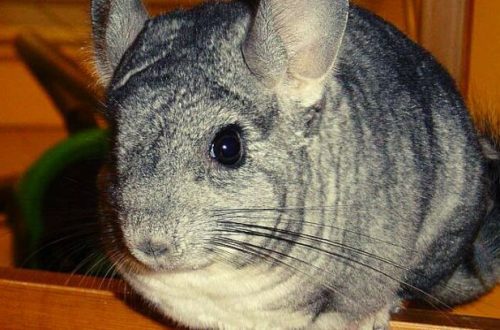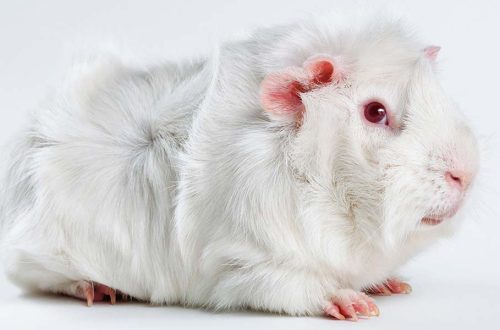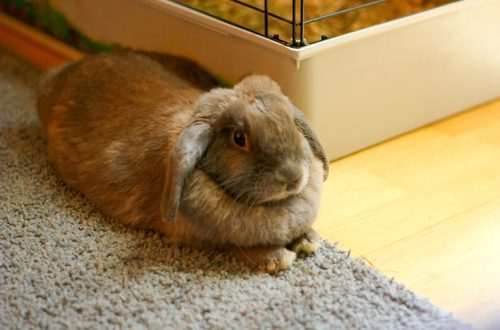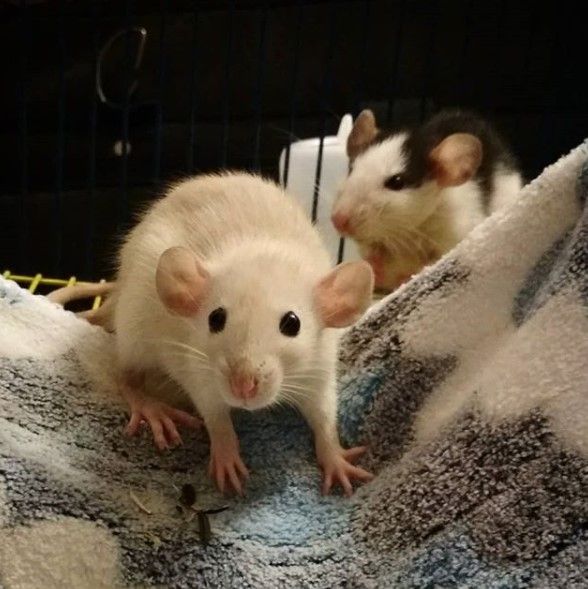
Domestic decorative rat: care and maintenance at home (photo)
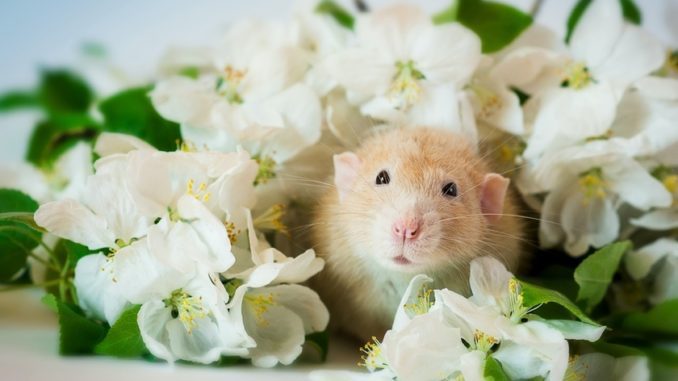
It is human nature to take care of four-legged or winged pets, communication with them brings only positive emotions, instills kindness and a sense of responsibility in children, and gives lonely people precious mutual understanding and disinterested strong friendship. The smarter the animal, the deeper and brighter the sincere affection and selfless love of the animal for its owner is manifested.
One of the most intelligent and affectionate pets is considered a decorative rat. Before buying a fluffy animal, it is desirable to learn everything about decorative rats, to understand the physiology and maintenance of a companionable rodent. Care for a domestic rat is minimal, and the level of intelligence and affection for a person is not inferior to common dogs and cats.
Contents
- What is a pet rat for?
- How domestic rats appeared
- Why you should keep a rat as a pet
- Varieties of decorative rats
- Physiological features of the domestic rat
- Group and single maintenance of decorative rats
- Cell selection
- Arrangement of a cage for a decorative rat
- Feeding ornamental rats
- How to play and train a decorative rat
- Rat Care
- Reproduction of decorative rats
- Video: decorative rats – care and maintenance
What is a pet rat for?
Keeping a rat at home does not require special specific care or expensive food. Domestic rats lend themselves perfectly to training, they wait and cheerfully meet the owner, like cheerful little puppies, play and fawn on the hands of the owner, like gentle cats, adore and trust a person, like the most faithful dogs.
Clever rodents distinguish pets among family members, build funny faces in a funny way and move their small ears, some individuals even laugh when tickled. In their small hearts lives a huge quivering love for their owners, the emotional manifestation of which cannot resist even the most unsentimental people.
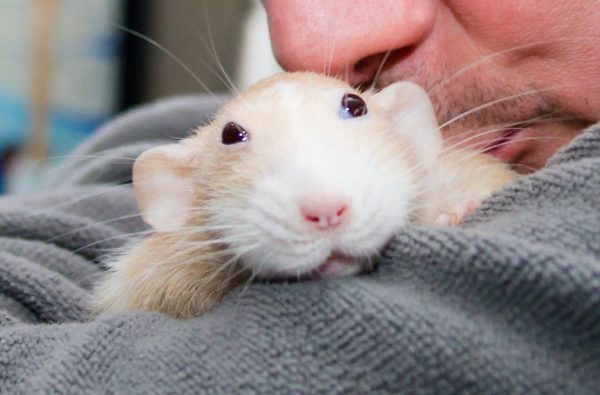
How domestic rats appeared
The progenitors of cute affectionate tame rats are ordinary wild gray rats, the reminder of which causes disgust and fear in the majority of the human population.
Wild rats appeared many millions of years ago in China and India, and in the 16th century, as maritime trade developed, the ubiquitous rodents entered Europe on merchant ships and, rapidly multiplying, filled all the cities.
In the 19th century in England, volunteers began to capture gray rodents to fight against dogs. It was during this period that the breeding of white tame rats began, albinos were shown at exhibitions and circus performances, kept at home, like outlandish animals.
On the resulting individuals of laboratory rats, people began to conduct numerous experiments. Some rodents escaped the fate of experimental animals, settled in the homes of scientists who fell in love with animals for their penetrating mind and boundless affection for humans. In private conditions, from laboratory specimens and wild rodents, new species and breeds of ornamental rats were bred, which today are found in breeders and in rat breeders’ clubs.
Why you should keep a rat as a pet
A decorative rat as a pet is ideal. Most people who are squeamish about wild rats, when they meet a cute tame rodent, change their attitude towards a smart animal, and the tricks that a fluffy rodent easily masters cause surprise and delight in children and adults.
Caring for a rat at home is quite simple, the animal must be provided with a comfortable cage with filler, water and simple food. Anyone who thinks of pet rats as dirty, infectious rodents is mistaken in their opinion. Decorative rats are very clean pets; in an apartment where a fluffy pet is kept, with timely cleaning of its home, there is no smell. Even in its cage, the rodent allocates one corner to relieve itself, if a bowl of food gets there – the rat, before feeding, drags it to a clean place with its teeth.
But the most important advantage of this fluffy rodent is its high need for communication. Each decorative rat is a separate personality with its own character and habits, the animal quickly remembers the voice and smells of a person, responds to a nickname, and with simple training brings small objects.
A funny cheerful little rat is ready to play with children and adults for hours on end, which causes fun and laughter among all family members, and aged individuals love to stretch out near gentle human hands, closing their eyes with pleasure and squeaking amusingly when stroking the back, ears and abdomen. A smart rodent subtly feels the state of a person and is able to relieve stress from his beloved owner. Keeping rats at home gives their owners touching moments of confidential caress and disinterested love of these little devoted friends.
Varieties of decorative rats
At home, you can keep a rat of any breed variety, depending on the preferences of the owner. Each breed of decorative rats is interesting in its own way and deserves decent care and maintenance at home.
Standard
This is the most common variety, which became the ancestor of other breeds of domestic rats. Characteristic features are a dense elongated body, a smooth short coat, wide ears and a long tail covered with sparse hair.

Dambo
A cute large rodent with large protruding rounded ears, giving the rat’s muzzle a funny look. The breed got its name from the nickname of the eponymous Disney circus elephant Dumbo with huge funny ears.
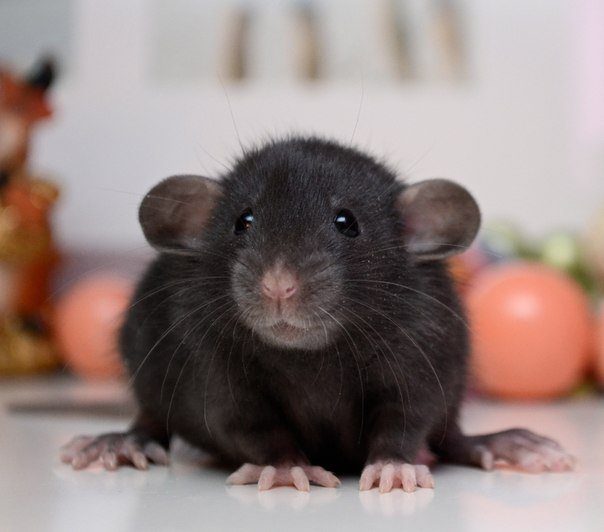
Rex
One of the most popular varieties. Pets of this breed differ from their counterparts in slightly wavy hair, thanks to which the fluffy rodent looks like a children’s plush toy.
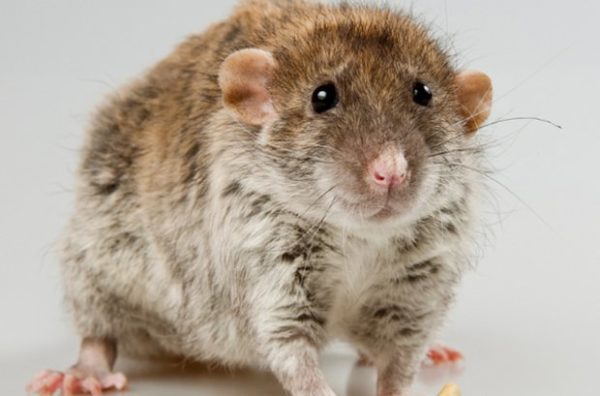
Sphinx
The body of animals of the Sphynx breed is absolutely hairless, with the exception of rare hairs on the head and limbs, the skin of rodents is folded, of a pale pink color, which gives some defenselessness and tenderness to this species. This variety is a great option for people who are allergic to animal hair.
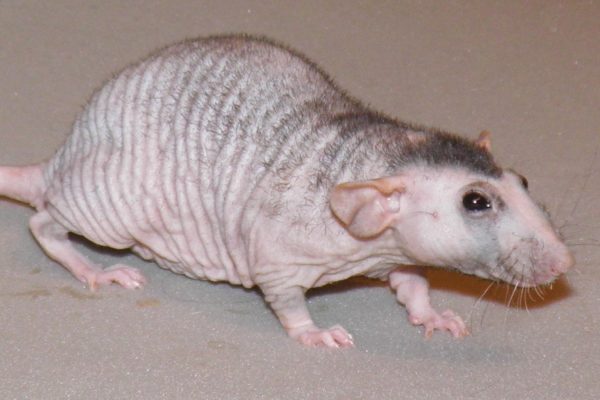
Satin
Rats of this breed are popular in European countries, the coat of this variety is dense, long, shiny and satin, adding a certain charm to pets.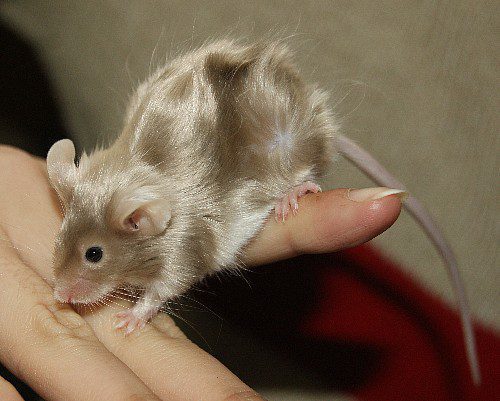
Tailless
A characteristic breed feature is clear from the name of this species, rodents have a pear-shaped body without a tail, which does not prevent it from remaining a cute sociable pet.
Physiological features of the domestic rat
The average lifespan of furry rodents is about two years, but with proper care and maintenance, domestic rats live up to 4 years. Even a young schoolboy can take care of rats on his own, for whom an intelligent rodent will certainly become his best friend.
In the wild, rats are active nocturnal, sleeping in the daytime before the next hunt. At home, smart rodents often adapt to the lifestyle of the owners and begin to stay awake and play more in the daytime.
Group and single maintenance of decorative rats
You can keep tame rodents at home alone, in flocks or in pairs. With any kind of content, it must be remembered that rats are social animals and need constant communication no less than a person. It is undesirable for an inexperienced rat breeder to start several individuals at once, caring for rats with a large flock includes not only feeding and cleaning the cage, but also periodically depositing fighting individuals, treating injuries and diseases in a large number of animals.
Most often, pet stores offer to buy a couple of rat pups of the same age so that they are not bored in the absence of their beloved owner. When young heterosexual animals are kept in one cage, numerous offspring will soon be born or the female may die as a result of early mating.
In nature, rats live in same-sex packs, only healthy sexually mature individuals mate exclusively for reproduction. If the owner is not going to breed tame rodents, you should not start a heterosexual couple of decorative rats.

When buying a same-sex pair, caring for ornamental rats is basically no different from single keeping, but you need to be prepared for fights between males. The content of several same-sex rats is close to their natural existence, all individuals become attached to their owner and compete for his affection and attention. During the period of lack of communication with humans, animals communicate and play with each other, such a lifestyle makes the pet happy and emotionally developed.
A solitary keeping of a fluffy rodent is also acceptable, but it is necessary to take care of a decorative rat, communicate and play with it more often. The animal should not be bored. In the absence of his blood friend, a domestic rat is firmly attached to his master, the owner’s duty is to provide his pet with close long-term communication, you need to carry a rodent on your shoulder and in your bosom, play with it, walk in the apartment and on the street. If the owner does not have so much time, it is better to have a same-sex couple of rats who will love a person and be friends with each other.
Cell selection
All a rat needs is a spacious cage with accessories, tasty nutritious food and a loving owner. A cage for a fluffy pet becomes a home where he spends most of his life, so buying a home for a little friend should be treated with increased attention. A cage for a decorative rat must meet the following parameters.
Size
A manual rodent cannot be kept in a narrow low cage; the animal needs space for the necessary movement inside the dwelling. It is advisable to purchase a wire cage with dimensions for keeping one or two pets: 60x40x60 cm, that is, 60 cm in length and height and 40 cm in width. With such a volume, the animal can freely play below or climb the bars in height. The distance between the bars should be no more than 1,2 cm.
Cage bottom
It must be solid, the slatted floor provokes frequent injuries of the limbs in rodents.
Cell pallet
Should be made of durable plastic with high sides to prevent spillage of the filler outside the rat house, wooden structures are undesirable due to their swelling from rat urine.
Design
It is advisable to purchase a collapsible cage with large doors that facilitate cleaning, washing, feeding, hanging hammocks for animals. The cage should be equipped with shelves for pets to rest.
Покрытие
Rods of cages for rodents are covered with enamel, zinc or powder paint, there is no fundamental difference between them. It is necessary to pay attention to the absence of chips, delamination of paint and rust.
Arrangement of a cage for a decorative rat
The dwelling of a domestic rat should be comfortable and cozy for a fluffy pet and contain the necessary accessories for feeding, smelling, playing and relaxing animals. At the same time with the cage must be purchased at the pet store.
Filler to absorb physiological odors
The most expensive, but common option for rat breeders is corn filler. Wood fillers and sawdust are not recommended for use; these varieties can cause allergic reactions in pets. An inexpensive and popular filler option is white napkins or toilet paper, which require frequent cleaning. The use of newspapers and magazines for these purposes is prohibited. Rodents can get poisoned by printing ink.
Food bowls
For dry food, there are hanging bowls that are securely attached to the bars of the cage, treats and liquid food should preferably be given in stable ceramic bowls.
Drinker
It is necessary to hang a nipple drinker in the cage, convenient and safe to use.
House
Rodents like to relax and hide in their own house, on the bottom of which you can lay soft cloths. The plastic durable house can be installed at the bottom of the cage or hung.
Hammock
A favorite place to rest and sleep is a soft hammock, which is suspended from the ceiling of the cage or between floors. It is absolutely unimportant for a pet to buy this accessory in a store or make it yourself from warm, cozy fabrics. It is necessary to periodically change and wash hammocks.
Restroom
Domestic rats are very clean, the animal independently chooses the corner in the cage where it goes to the toilet. You can equip this place with a special tray with filler or a container with high sides.
Climbing accessories and toys
If the size of the cage allows, you can hang ropes, ladders, tunnels, bridges, toys, edible accessories.
Feeding ornamental rats
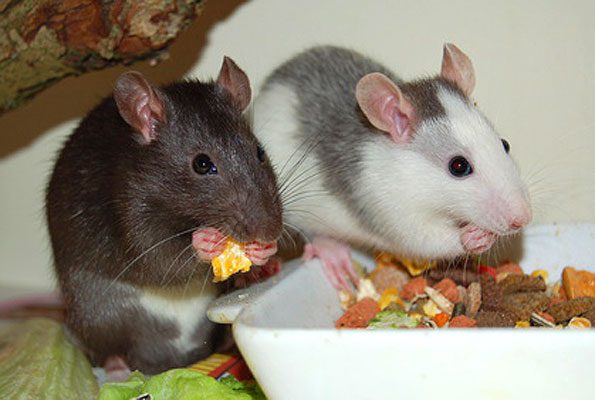
Fluffy rodents are quite unpretentious in food, although each individual has its own tastes and favorite treats. It is necessary to feed a pet correctly from the most tender age in order to avoid the development of pathologies of the digestive system and obesity. The diet of a domestic rat should include the following products:
Cereals
Dry crushed cereals or boiled cereals made from buckwheat, corn, rice, barley and wheat are the basis of the diet.
Seeds and nuts
Flax, pumpkin and sunflower seeds, nuts, herbs and sprouts of oats, wheat, millet as vitamin supplements.
Dairy products
kefir, yogurt, cottage cheese, fermented baked milk – sources of calcium and bacteria for the intestines of animals.
Protein and meat
Boiled eggs, meat, chicken, fish, liver, kidneys, heart are a source of protein.
Vegetables
Vegetables, dried fruits, berries – vitamins and fiber to stimulate intestinal motility.
Clean drinking water and treats
As a treat for a fluffy pet, you can use pieces of apple, carrot or watermelon, puffed rice or corn, strawberries and grapes.
In no case should you give pets:
- chocolate;
- alcohol;
- barbecue;
- fried spicy meat;
- sweet;
- raw beans, cabbage, potatoes, spinach, green bananas.
How to play and train a decorative rat
About the subtle mind and high intelligence of domestic rats, you can talk endlessly and a lot. A funny animal physically needs daily active communication with the owner and long walks. The peace-loving rodent willingly makes contact and enjoys emotional communication with his beloved owner. It is useful to take the time for walking the animal with energetic fun games that provide regular physical activity and spiritual closeness of a person and a little friend.
Domestic rats love chasing a candy wrapper on a string, wrestling with the owner’s hands, climbing in the sleeves and bosoms of the owners, getting things out of boxes, swarming in an abandoned towel. Any game should give pleasure to a pet and a person, accompanied by laughter, affectionate encouragement, kisses and strokes of an intelligent animal. The more often and closer the owner communicates with a smart rodent, the faster the pet gets used to it and begins to trust the person.
Decorative rats very easily master simple tricks at home. Through regular training and rewards, you can teach a funny pet to bring small objects, jump on different objects, jump over a hoop, crawl along a rope and a hoop, and other tricks. When training, the patience of the owner and the trust of the animal are very important. After each trick, it is necessary to encourage a capable rodent with treats and affectionate words; in no case should you scream and beat the animal.
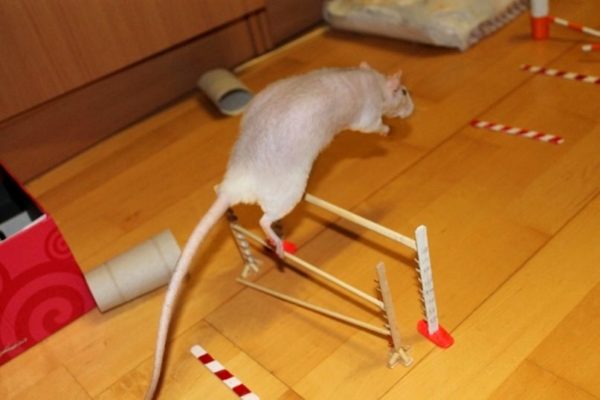
Rat Care
It is absolutely not difficult to take care of the pet of the whole family, it is necessary to take care of the health of the rodent and the cleanliness of the rat’s dwelling, timely feeding and daily filling of the drinker. The owner-rat breeder needs to know a few rules for the care and maintenance of domestic rats:
- the cage with pets should be in a dry, warm place, direct sunlight and drafts should be avoided;
- daily cleaning of the cage involves washing the feeders and drinkers, removing food debris, replacing the spent filler;
- twice a week it is necessary to disinfect the cage and tray using disinfectant solutions;
- if necessary, a fluffy pet is bathed in warm water using special shampoos;
- periodic trimming of rat claws with nail scissors or nippers.
Reproduction of decorative rats
Breeding decorative rats at home is a very responsible and serious step. The owner must take care of the pregnant and lactating female, as well as her brood, the problem of distributing offspring also falls on the shoulders of the owner of the rodent. These chores are more than paid off by communication with touching and defenseless rat pups.
For mating, it is necessary to select a pair of healthy, well-fed animals: it is advisable to mate the female for the first time at the age of 5-8 months, the age limit does not apply to males. Before mating, animals must be kept on a weekly vitamin diet to obtain healthy and active rat offspring. The result of successful mating is the onset of pregnancy in the female, which lasts 21-23 days.
The pregnant rat becomes more calm, selective in food, in the third week the body of the female acquires a pear-shaped shape with a rounded convex belly. Before giving birth, it is necessary to transplant the male, remove all floors, stairs and toys from the cage, put a nest house for the pregnant rat and give pieces of napkins for arranging the nest.

Genus in domestic rats occurs most often at night and lasts 2-3 hours, an average of 9-12 completely hairless blind and deaf rat pups are born into the world. It is necessary to feed the female who has given birth with highly nutritious food with an increased content of protein and calcium to produce the required amount of milk. Newborns grow very quickly, on the 4th day the kids begin to hear, by the 12th day the little animals open their eyes, and from the 14th day they already communicate with people, play pranks and run around the apartment in a mischievous flock.
A decorative rat is a worthy contender for the role of a pet. Not every cat is so tender and affectionate to its owner, and in terms of devotion and affection, this little rodent is not inferior to any dog. Any person who at least once in his life kept a tame rat at home will forever be imbued with love for these touching and faithful animals.
Video: decorative rats – care and maintenance
All about the care and maintenance of decorative domestic rats
3.3 (65.94%) 249 votes





